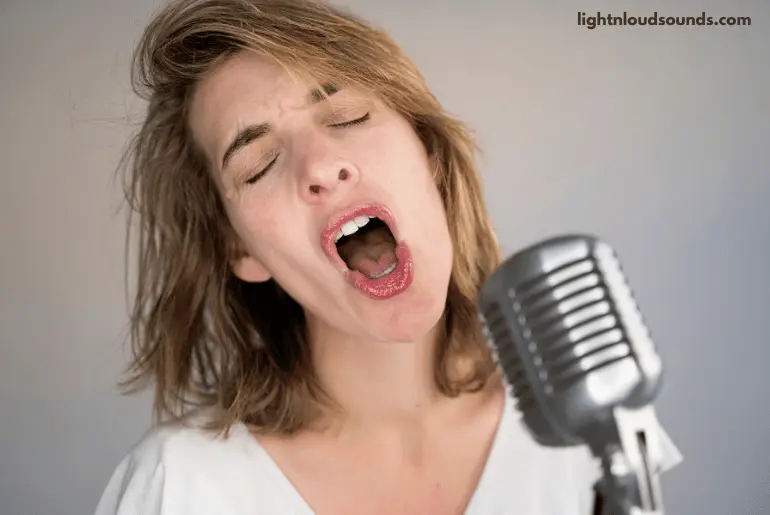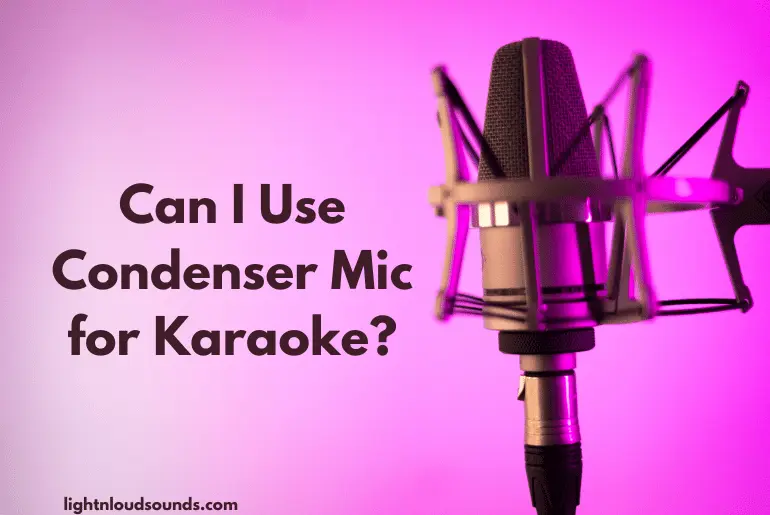Karaoke is a fun and popular activity where people sing along to a song’s instrumental version. When it comes to karaoke, the kind of microphone used can make a big difference in sound quality. A lot of people wonder if a condenser mic, which is known for studio recordings, would be good for karaoke. In this article, we’ll explore the idea of using a condenser microphone for karaoke and look at its pros and cons.
Post Contents
Can I Use Condenser Mic for Karaoke?
Yes, you can use a condenser mic for karaoke, but they might not be the best choice for several reasons. Condenser microphones are sensitive and designed primarily for studio settings where they can capture the nuances and details of vocals and instruments. In a karaoke setting, this sensitivity might lead to feedback issues, especially in noisy environments or when the sound system isn’t well-calibrated.
Moreover, condenser mics require a power source, either from a battery or phantom power from a mixer, adding another layer of complexity to your setup. They also tend to be more fragile and might not handle accidental drops or rough handling well, common occurrences in lively karaoke sessions.
What Type of Microphone Is Best for Karaoke?
For karaoke, dynamic microphones are generally the best choice. They are rugged, durable, and can handle high sound pressure levels without distortion, making them ideal for the lively and unpredictable environment of karaoke sessions.
Unlike condenser microphones, dynamic mics don’t require an external power source, simplifying the setup. They also resist feedback better, ensuring that the singing remains the focus without unwanted noise interference. Given their sturdy construction, dynamic microphones are more resistant to accidental drops or rough handling, which is common in karaoke settings.
While they might not capture the complex details of sound as precisely as condenser mics, their overall performance and durability make them a preferred choice for live vocal applications, including karaoke.
What Is the Difference Between a Karaoke Mic and A Condenser Mic?

1. Purpose and design
Karaoke mics are primarily designed for live vocal performances in environments like bars, parties, and events. They prioritize volume and clarity, ensuring the singer’s voice is heard clearly over backing tracks. On the other hand, condenser mics are tailored for studio recordings. They are designed to capture a wide frequency range and the subtle nuances of sound, making them ideal for recording vocals, instruments, and other sound sources in a controlled environment.
2. Sensitivity
Condenser mics are more sensitive compared to karaoke mics. This heightened sensitivity allows them to pick up fine details and produce high-quality recordings. However, in live settings like karaoke, this can lead to issues like feedback if not managed correctly. Karaoke mics, which are often dynamic microphones, are less sensitive, making them less prone to feedback and better suited for louder environments.
3. Power requirements
Condenser microphones need a power source to charge their internal electronics. This power, often referred to as phantom power, can come from batteries or external equipment like mixers. In contrast, most karaoke mics, especially dynamic ones, do not require an external power source. This makes setting up and using karaoke mics simpler and more straightforward in many situations.
4. Durability and handling
Karaoke mics are built to withstand the rigors of live use. They are often more rugged and can handle accidental drops, moisture from singers, and general wear and tear. Condenser mics, due to their intricate internal components and sensitive nature, are more fragile. They need careful handling, and dropping them or exposing them to rough conditions can easily damage them or affect their performance.
How Do You Sing with A Condenser Microphone?
When singing with a condenser microphone, ensure it’s connected to a power source since most require phantom power. Position yourself about 6-12 inches away from the mic to capture a full, clear sound without any distortions. Angle the microphone slightly towards your mouth, keeping it at mouth level.
Maintain a consistent distance as you sing, and use a pop filter to minimize plosives, like “p” and “b” sounds. Adjust the microphone’s gain settings to avoid peaking or clipping, ensuring your voice is clear and not distorted. Remember, every condenser mic may have its nuances, so always check the manufacturer’s guidelines.
Conclusion
After looking into the various factors, it’s clear that while condenser mics are mainly used for studio recordings, they can be used for karaoke. However, it’s essential to weigh the benefits and potential issues before deciding. Whether or not a condenser mic is the right choice for your karaoke session depends on your needs, preferences, and the environment you’re in. Always choose equipment that will give you the best experience and enjoyment.

